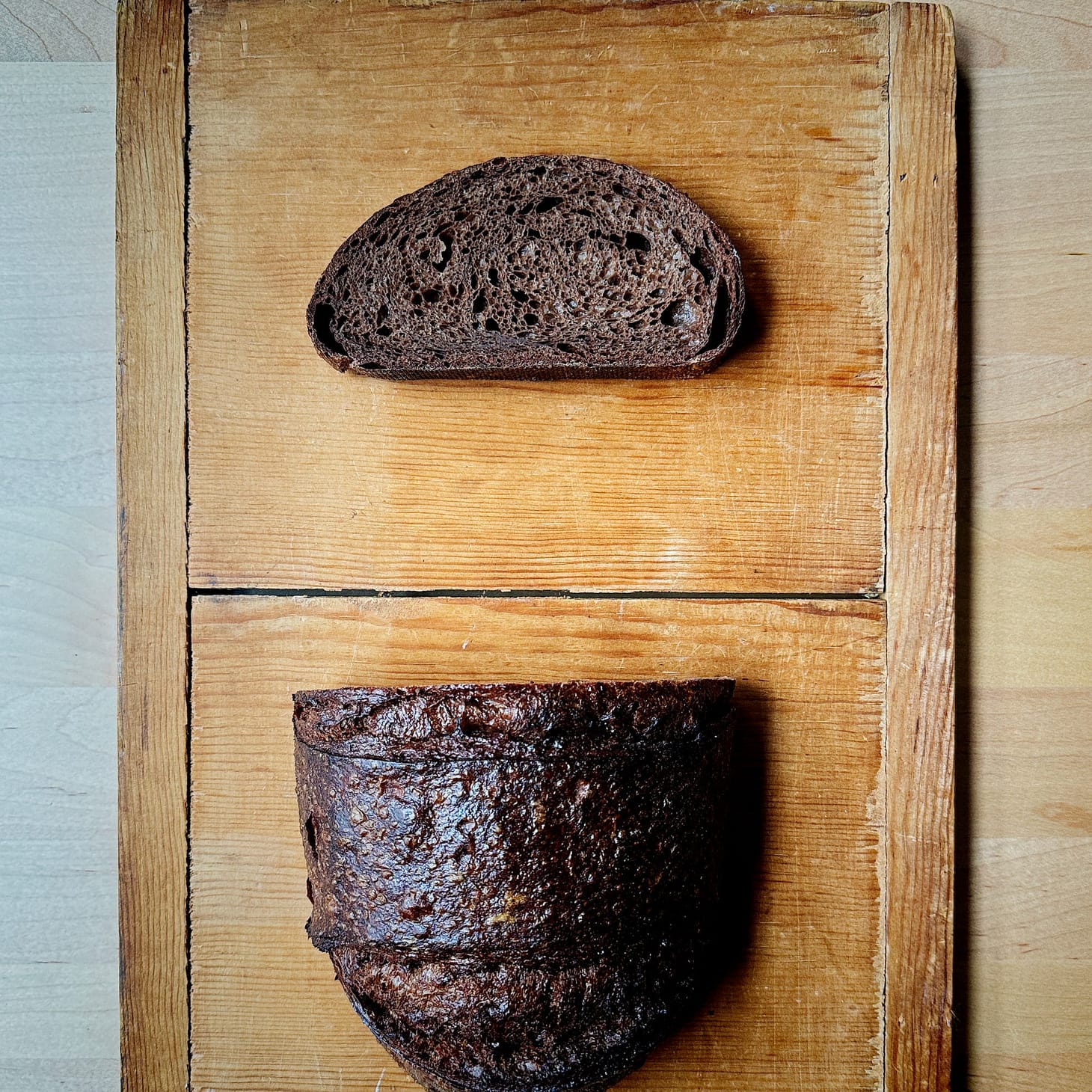Friday Bread Basket 12/15/23
The Dark is Ryesing

Table of Contents
Hello from the Wordloaf Friday Bread Basket, a weekly roundup of links and items relating to bread, baking, and grain. Above is the revised version of my sourdough dark deli rye recipe, which will be going out to the Breaducation testing group as soon as I tweak the “light” and marbled versions. I like the OG one, but this one is worlds better.
Discard is the mother of invention

My pal Chloe-Rose Crabtree—of Sourced and London bakery Bake Street—recently shared a recipe for sourdough discard jalapeño cornbread over at the Vittles newsletter. It looks like a great recipe, and gets at something about sourdough discard recipes that I believe too, namely that even with something that is otherwise “waste,” fresher is often better:
Most discard sourdough recipes will state that a starter of any ripeness will work (instructions on how to achieve perfect ripeness here). This may be technically true, but doesn’t always yield the best results. After a few test runs of this cornbread, I realised the fluffiness I achieved from my first batch was because my starter was fully active. After trying other sourdough discard recipes, I have found a ripe starter is generally best. I test ‘ripeness’ by dropping a spoonful of starter into some cold water – if it floats, then it is active. If you’re working with an inactive stater, the cornbread will come out denser and will dry out more quickly, but it will still be delicious.
This isn’t a quick recipe and the steps in it are intentional. The jalapeño butter is made a day ahead so that the peppers can fully infuse into the butter. Starter is mixed with the flour, sugar, cornmeal and eggs and left to rest so it is activated before baking. Buttermilk is added after the initial mix is allowed to rest because enzymes in the milk could kill the wild yeast in the sourdough starter. Bicarbonate and baking powder are also added later because the acidity in the starter will activate them too soon before baking.
The recipe is behind the paywall, but you really should be subscribing to it anyway, and in any case, the essay itself is worth a read and accessible to all.
Tangible intangible

Anissa Helou wrote about the addition of Lebanese manousheh (or man2usheh, since as she mentions, “the numbers in the transliteration indicate Arabic letters that are… muted (2 for Q or ق in Arabic which we don’t pronounce))” to UNESCO’s list of “intangible heritage” items:
On Monday 4 December, 2023, man2usheh, a flat bread normally topped with za3tar and extra virgin olive oil, which is a quintessential Lebanese breakfast, has been recognised by UNESCO as an intangible heritage. A small consolation given what Lebanon is going through these days but an achievement all the same.
Of course, mana2ish (plural for man2usheh) are made with other toppings, including kishk which is my favourite and for which I will give a recipe in my new book, but it is the za3tar one that has been recognised.
Most of the time, the dough used is the same as that for pita but if you go south, you will be able to have mana2ish with a slightly textured spiced dough used to make mishtah, a typical southern flat bread. Both are delicious but those I loved and can sadly no longer enjoy were those made by Emile, the lovely baker near my mother’s home in Ballouneh.
The post includes some wonderful images and words about Anissa’s baker friend.
Bread, Alone
I’ve been friendly with the founders of upstate New York bakery Bread Alone for years, but have yet to visit the place. After having watched this new Eater video on how they manage to produce 150,000 loaves per day, I need to correct this, stat.

Stray Crumbs:


That’s it for this week’s bread basket. Have a peaceful weekend, see you all on Monday.
—Andrew
wordloaf Newsletter
Join the newsletter to receive the latest updates in your inbox.





